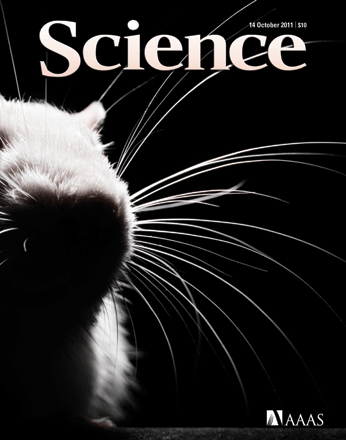 近日,国际顶尖学术期刊——《科学》(Science)刊登了厦门大学校友刘陈立为第一作者、关于“发现新的生物图案生成原理”的研究成果,解析了生物学上的一个根本性问题:细胞到底是如何通过自身的运动和成长,而形成美丽有序的形状的,这提出了调控细胞生长的一个全新生物学原理,对了解生物结构的形成机制具有重要意义。
近日,国际顶尖学术期刊——《科学》(Science)刊登了厦门大学校友刘陈立为第一作者、关于“发现新的生物图案生成原理”的研究成果,解析了生物学上的一个根本性问题:细胞到底是如何通过自身的运动和成长,而形成美丽有序的形状的,这提出了调控细胞生长的一个全新生物学原理,对了解生物结构的形成机制具有重要意义。
该项成果由香港大学、香港浸会大学、美国加州大学圣地亚哥分校以及德国马尔堡大学等四所大学的研究人员合作完成,刘陈立校友为主力研究员。此研究是一项结合系统生物学、定量生物学、合成生物学和物理学的跨学科研究。这项研究成果不但对形成周期性图纹以及图纹数量的调控机制解释做出了贡献,而且也显示了合成和定量生物学在探索生物学基本原理中的作用。
刘陈立是福建霞浦人,1998年考入厦门大学生物学系,2002年毕业后继续在厦门大学生物学系读研深造,现为香港大学生物化学系博士后研究员,并担任厦门大学旅港校友会青年部部长。
相关英文论文摘要:
Sequential Establishment of Stripe Patterns in an Expanding Cell Population
Periodic stripe patterns are ubiquitous in living organisms, yet the underlying developmental processes are complex and difficult to disentangle. We describe a synthetic genetic circuit that couples cell density and motility. This system enabled programmed Escherichia coli cells to form periodic stripes of high and low cell densities sequentially and autonomously. Theoretical and experimental analyses reveal that the spatial structure arises from a recurrent aggregation process at the front of the continuously expanding cell population. The number of stripes formed could be tuned by modulating the basal expression of a single gene. The results establish motility control as a simple route to establishing recurrent structures without requiring an extrinsic pacemaker.
英文论文链接:https://www.sciencemag.org/content/334/6053/238.abstract







